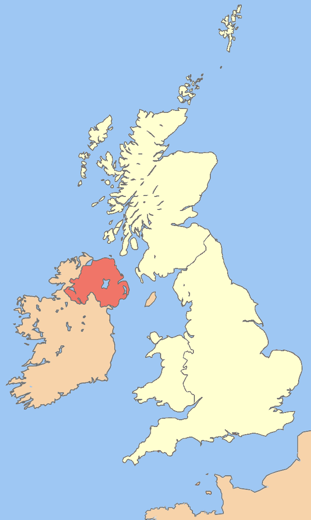Description

Disclaimer: Copyright infringement not intended.
Context
- US President visited Belfast, the capital of Northern Ireland, to mark the 25th anniversary of the Good Friday Agreement.
What were The Troubles?
Historical Background
- Northern Ireland was created in May 1921 by partitioning Ireland, and consists of the six northeastern counties of the island.
- In 1922, the rest of Ireland gained independence from the British (today’s Republic of Ireland, with its capital in Dublin).
- Northern Ireland remained with the United Kingdom, but tensions simmered between the side loyal to the Crown, mostly Protestants, and the faction wanting to join the Republic, mostly Catholics.
- By the 1960s, the Protestants had become more powerful than the Catholics, who claimed discrimination.
- By the end of this decade, paramilitary groups from both sides, such as the Irish Republican Army (IRA) and Ulster Volunteer Force (UVF) were attacking each other.
- The police and the British Army, trying to quell the violence, were both accused of atrocities and more violence.
- The Bloody Sunday of 1972 saw British soldiers kill 14 unarmed protesters. I
- n 1979, the IRA killed Lord Louis Mountbatten, the former Governor General of India, along with his young grandson. In 1984, they tried to assassinate then-British Prime Minister Margaret Thatcher.
- In all, according to the BBC, The Troubles claimed the lives of more than 3,500 people.
.jpg)
What is the Good Friday Agreement?
- The Good Friday Agreement was signed on April 10, 1998, between factions of Northern Ireland, and the governments of Britain and Ireland, to end decades of violence in Northern Ireland among those who wished to remain with the United Kingdom (UK) and those who wanted to join Ireland.
- The negotiators included then British Prime Minister Tony Blair, then Irish Prime Minister Bertie Ahern, George Mitchell, a former Democratic senator who acted as the envoy of then US President Bill Clinton, and eight parties from Northern Ireland.
Terms of the Good Friday Agreement
- Northern Ireland would remain part of the UK, but could join Ireland if, in a referendum, a majority of people on both sides voted for it.
- People born in Northern Ireland could have Irish or British nationality or both.
- Weapons by paramilitary groups would have to be decommissioned, but people in jail for violence so far would be released.
- Northern Ireland would get a new government, where both the nationalists and unionists would be represented.
- This devolved government would sit at Stormont and have powers over most local matters, while the UK government would look after security, foreign policy, tax laws, immigration rules, etc.
- On May 22, 1998, a referendum was held in Ireland and Northern Ireland, and the agreement was approved by 94 per cent of voters in Ireland and 71 per cent in Northern Ireland.

Current status of the agreement
- The most important achievement of the Good Friday Agreement has been an end to bloodshed and enduring peace in the region, apart from some sporadic violence.
- However, Brexit has thrown a spanner in the works. Stormont has been paralysed for more than a year. On Monday, masked youths in paramilitary dress threw petrol bombs at the police.
- Britain’s intelligence agency, MI5, recently increased the threat level in Northern Ireland from domestic terrorism to “severe”.
- This is because after the UK voted to leave the EU, Northern Ireland shared a land border with an EU country, Ireland.
- As the EU and the UK have different product standards, checks would be necessary before goods could move from Northern Ireland to Ireland.
- Creating checkposts at this border, with its history of violence and hard-won peace, was considered too dangerous.
- Thus, it was decided that checks would be conducted between Great Britain (England, Scotland and Wales) and Northern Ireland (which together with Great Britain forms the United Kingdom).
- This upset the Democratic Unionist Party (DUP), the largest pro-Union party, and it continues to boycott Stormont. Without the DUP, the government cannot function.
- To solve this crisis, the UK and the EU in February reached an agreement known as the Windsor Framework, but it is yet to soothe nerves.
Must-Read Articles:
Windsor Framework: https://www.iasgyan.in/daily-current-affairs/windsor-framework
|
PRACTICE QUESTION
Q) Good Friday Agreement in a way allowed all groups to stick to the points most precious to them, while agreeing on ending violence. Comment. (150 words)
|

https://indianexpress.com/article/explained/explained-global/biden-in-belfast-what-is-good-friday-agreement-8551088/












